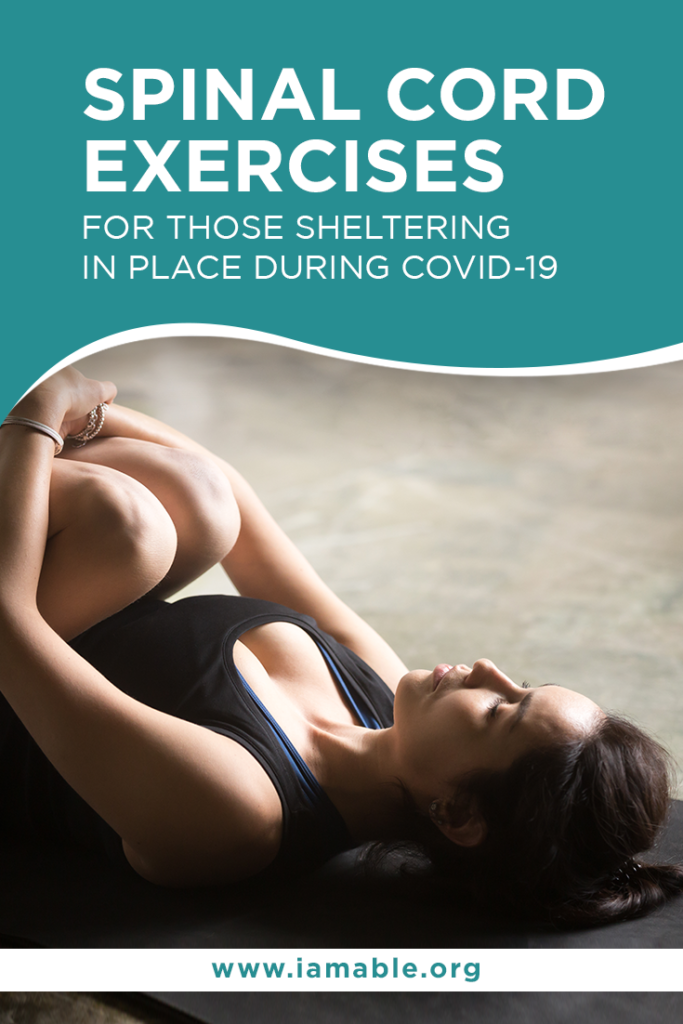Miami, FL 33186

Daily activity is crucial for anyone living with a spinal cord injury. The general consensus is that you want to get at least 2.5 hours of exercise per week. Of course, you should spread this time throughout the week. For example, if you exercise for 30 minutes five times per week, this can provide respiratory, cardiovascular, strength, and bone density benefits. You also want to split your spinal cord exercises between strength training and aerobic exercise.
While staying active may be easy for you when you can go to a spinal cord injury recovery center on a daily basis, you may find it more difficult during the COVID-19 crisis. If you are sheltering in place, how can you get the exercise that you need?
Let’s briefly take a look at some of the obstacles to working out at home. We will discuss a few ways to overcome these challenges. Then we will consider some practical guidelines for your activity based on a UK study. Finally, we will take a look at some simple exercises you can perform at home. Let’s get started!
SCI survivors face obstacles to exercise on two fronts – physically and mentally. To address the physical challenges, we will take a look at some exercises suggested by Ben Clark. He has a large social media presence and shares his exercise routines. Since he is living with quadriplegia, Mr. Clark is an inspiration for those who want to maintain a good exercise routine despite living with paralysis.
On the mental side of things, setting goals is a crucial step to take. If you want to review the most vital steps to coping with your new life circumstances, we recommend our eBook, 7 Unbelievably Important Steps to Take to Thrive after Paralysis. We’ll mention it again later. For now, let’s talk about a study that shines a light on the best exercise routines for mitigating the symptoms of paralysis.
Researchers led by Dr. Kathleen A. Martin Ginis provide an international look at the best way for SCI survivors to get benefits from exercise. The research reveals that exercise can lower the risk of heart disease, stroke, or diabetes for patients. What is the recommended routine according to the study?
With this study in mind, you can begin to decide how you want to split up your 150 minutes of exercise per week. For example, you may want to perform 30 minutes of cardiovascular exercise on Monday, Wednesday, and Friday. Then you can complete your strength training exercises on Tuesday, Thursday, and Saturday, taking about 20 minutes for each session.
Again, this is just a suggestion, and you should speak with a healthcare professional to finalize the best workout routine to meet your personal needs and ability level. With that in mind, let’s look at a few exercises you may be able to perform at home, depending on your current level of ability.
Again, we want to provide some exercise suggestions, and you can actually watch Ben Clark perform these exercises on his YouTube channel “Adapt to Perform.” However, if you are familiar with these exercises and have a kettlebell, dumbbell, or even a bottle of water, you can get started right away.
In the video, he performs ten reps of each compound exercise and then repeats the routine four times (with a short break in between sets). Other videos are recorded from his live stream and involve cardiovascular exercises ranging from shoulder rolls to a paddling motion (using a pole or resistance bands). Here’s an example of a half-hour routine that includes a warmup and cooldown.
We hope this article provides you with the motivation to get your fitness routine started, even if you do have to modify some exercises in order to perform them at home. When you see and feel the benefits of exercise, both physically and mentally, it will motivate you to keep going.
Again, to help you get started, iAM ABLE would like to suggest our eBook, 7 Unbelievably Important Steps to Take to Thrive after Paralysis. It will help you to embrace the challenges and success to come in your recovery journey.
Grab our free e-book 7 Unbelievably Important Steps to Take to THRIVE after Paralysis by clicking the image below.
